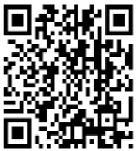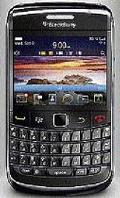


You've seen them all over the place; these cryptic images have appeared in newspaper and magazine advertisements, on product packaging, on flyers, on business cards, on TV and on websites, even in this column. But what are QR codes?
The latest trends in mobile communication, QR codes, are quick response codes. QR codes are designed to be scanned and read by smartphones using a range of apps that we will get into later. The obvious advantage is simplicity. So, rather than whipping out a pen and writing down a web address, or trying to key in a long URL into a phone browser, all you need to so is scan and go.
Here's how it works. Breakout your BlackBerry, Android, iOS or Window 7 smartphone and make sure you have a scanning app.
BlackBerry already have AppWorld pre-installed, so BB users can skip the download of another app. Everyone else can check out Bar Code Scanner, Microsoft Tag, Neo Reader, ZXing, Kaywa, I-nigma or Red Laser. Once installed, fire up the app and direct your phone's camera to the QR code. In less than a second, the app will direct you to the QR code's content for you to approve before accepting. And voila!
QR codes are like bar codes on steroids. Traditional bar codes are single dimensional and top out at 20 numerical digits of information. By contrast, a QR code, with its black modules arranged in a square pattern on a white background, can lead the user to a website address, a calendar appointment, a contact card, a text message, app download or even a geo-location.
With that much information just a scan away, ideally you want to have a smartphone with a 3G, 4G or WiFi connection for easy access. And, with the increasing adoption of smartphones, we can expect to see even more QR codes pop up.
QR codes are a fun and easy way for us to have access to promotions, and promoters love QR codes 'cause they are customisable, trackable and free to generate. Expect to see many more QR codes pop up all over. And expect some competition.
The original inventors of QR codes, Denso-Wave, a subsidiary of Toyota, opted to make the technology free for all, but Microsoft has launched a competing QR code called Tag. The original QR code is a two-dimensional, black and white matrix design, it is ubiquitous and easily scanned by all smartphones with an associated app. The Microsoft branded Tag uses colour and can only be accessed with the Tag app. Don't expect this to catch on even though it's free.
What you can expect is to see QR codes becoming far more common; and why not?
Tech Glitch: Simone was appalled to note, "my contact numbers are all over FB, how do I get them down, and fast?"
Tech Fix: Facebook can 'harvest' your contacts numbers from your mobile device when you set up Facebook smartphone app to sync with the website. Syncing can be cool - your Facebook contact pics appear in your address book. But it can also be scary when you consider that third party apps may then have access to your entire address book.
To stop this, first turn off syncing; then remove the contacts by clicking on Edit Friends, clicking on Contacts then read the panel on the right to find the link to remove contacts. Facebook doesn't make it easy, but take a moment to protect your privacy and those of your trusted friends.
Got a tech glitch? get your tech fix at: facebook.com/carlettedeleon. Listen to Tech Time on FAME 95 FM each Tuesday morning at 8 am.
